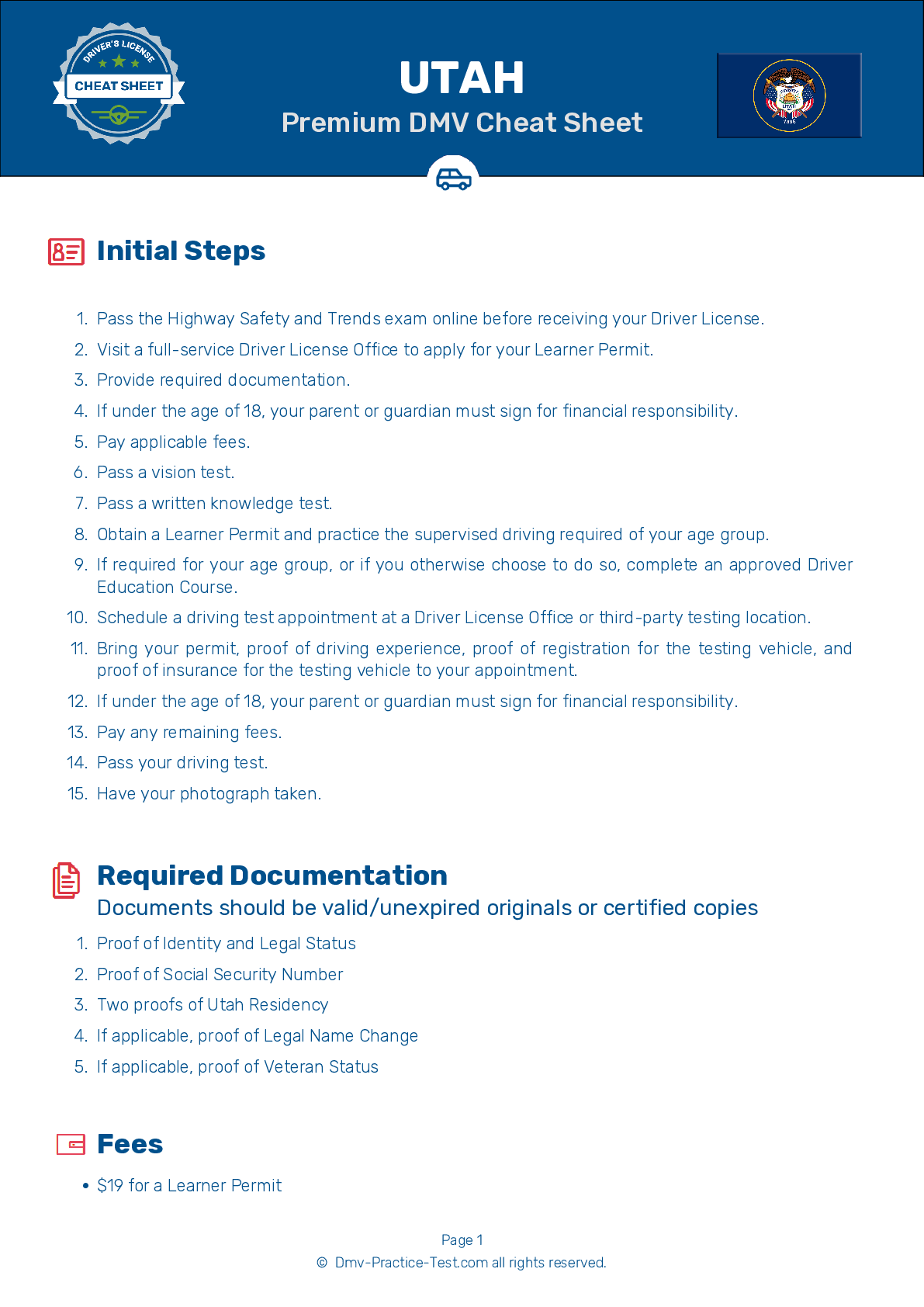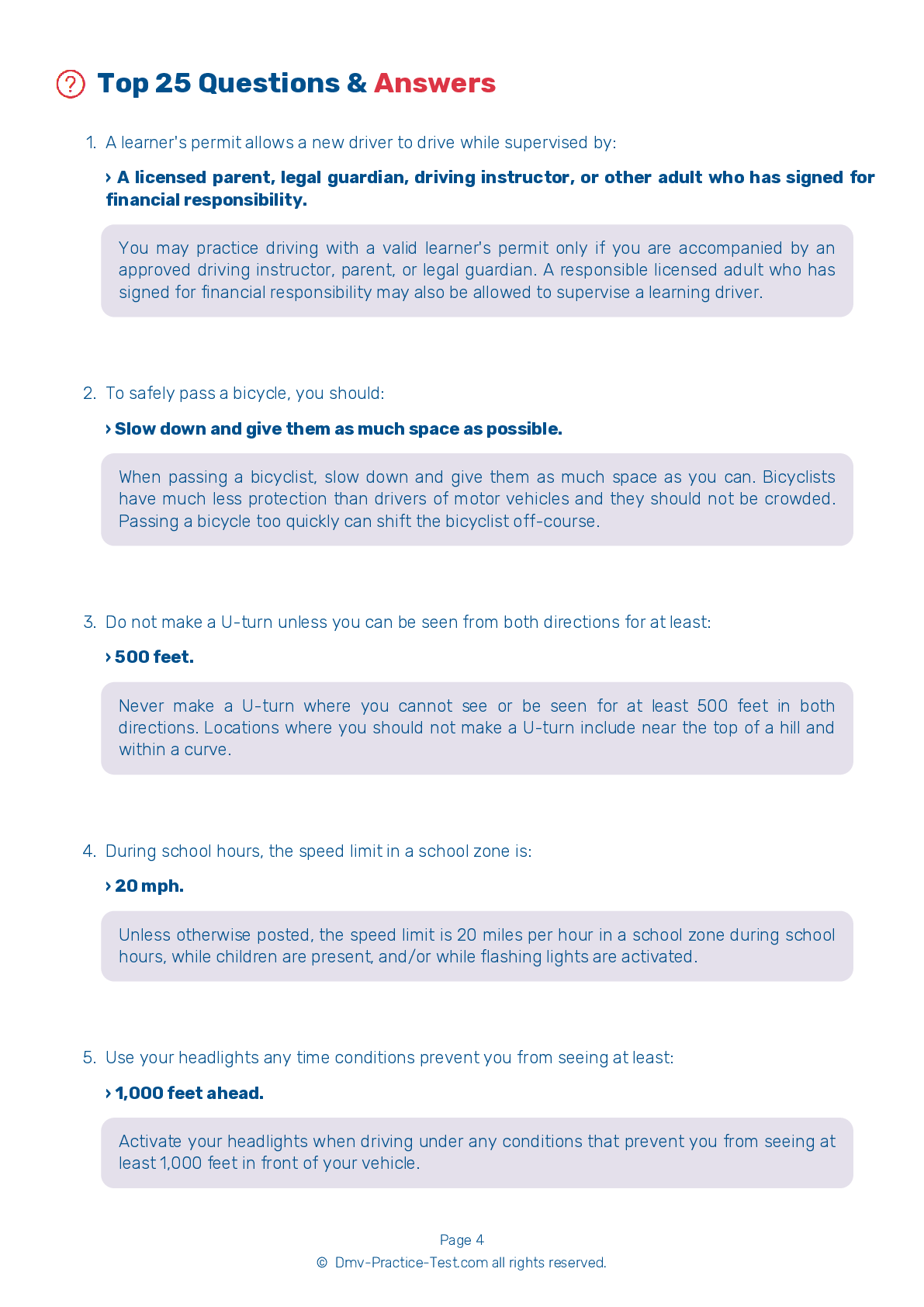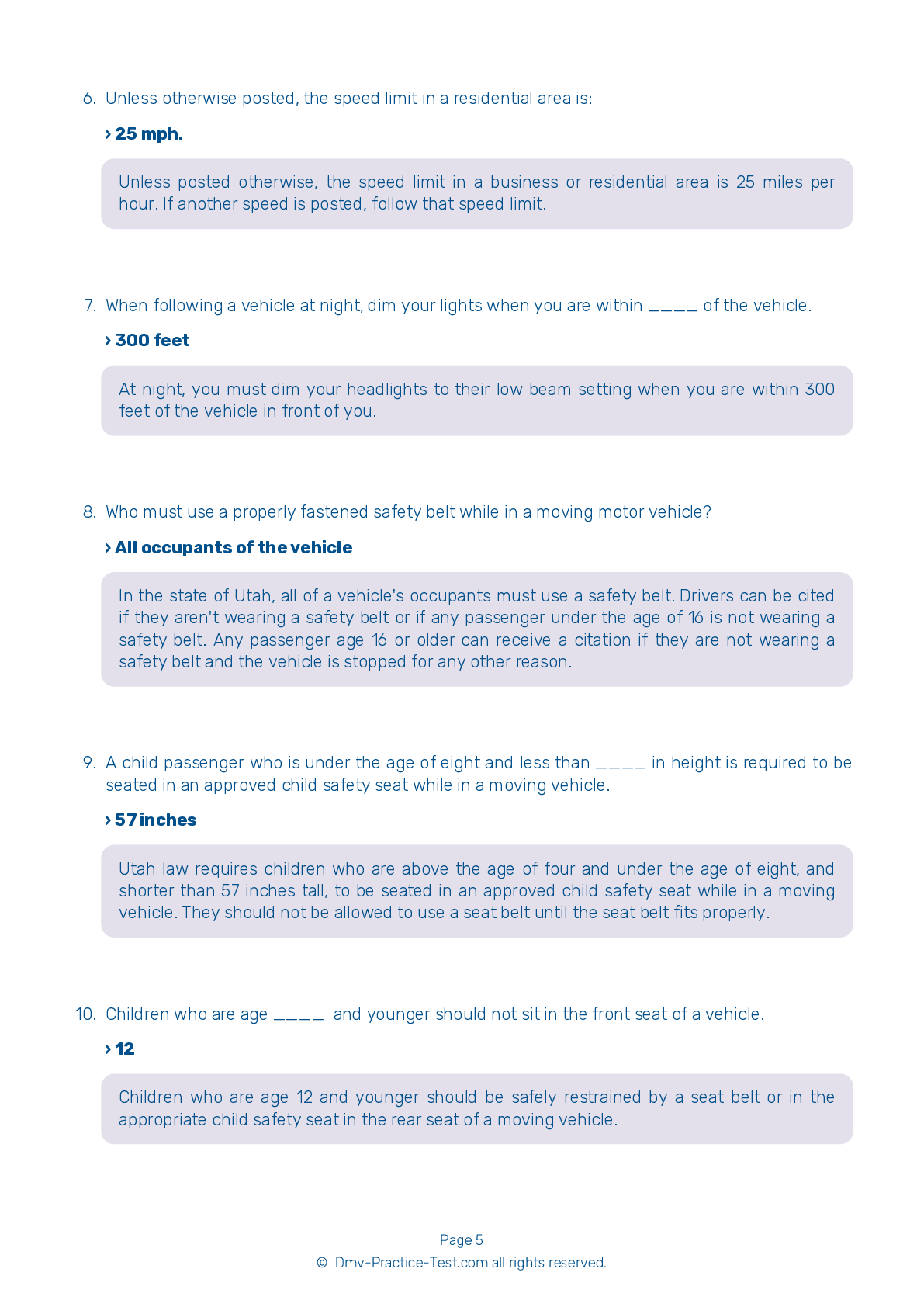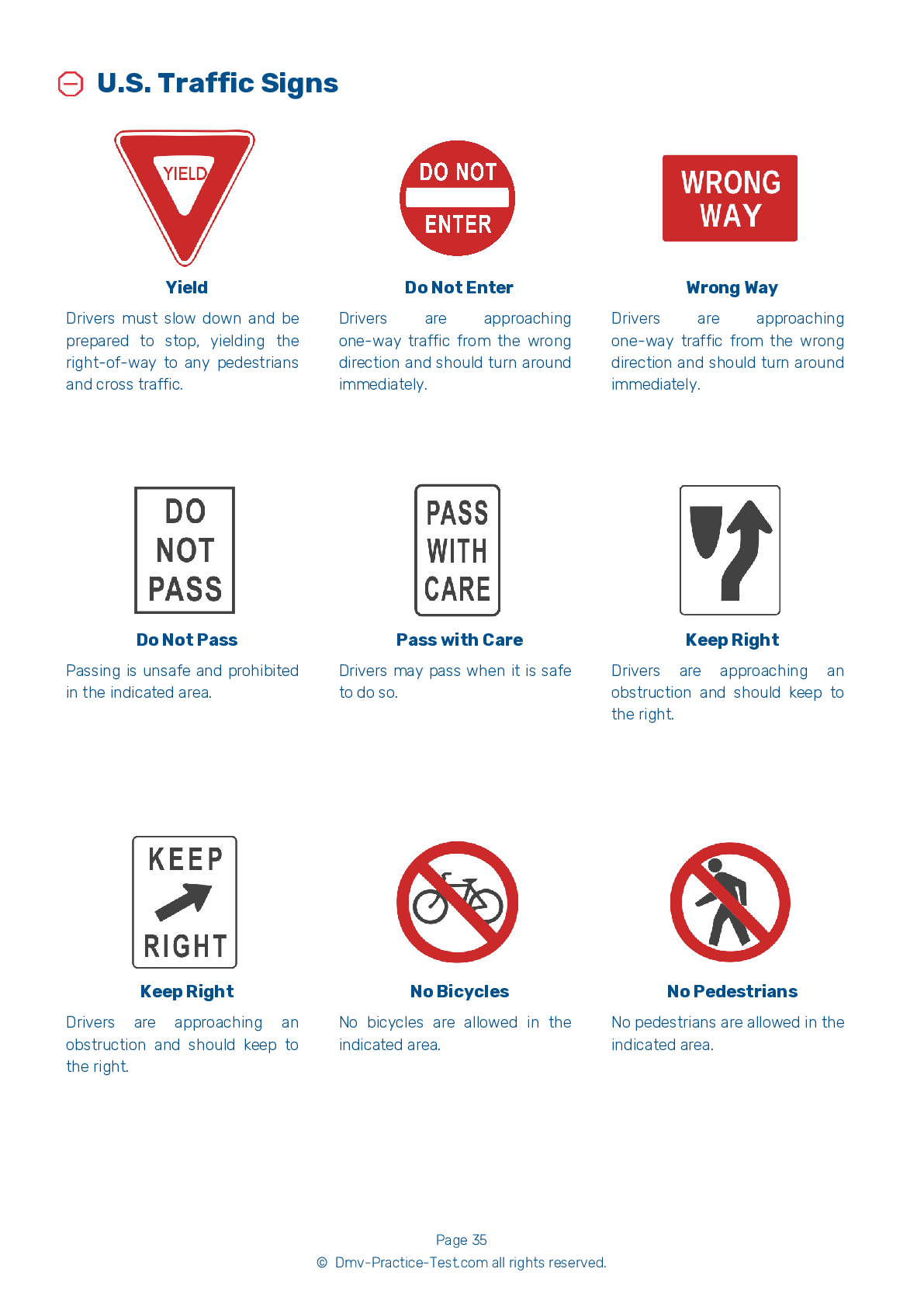FREE Utah DMV Practice Test #21 Page 3 of 3
The practise exams for the Utah DMV have been updated for January 2025. It comprises questions based on the most important traffic signals and laws for 2025 from the Utah Driver Handbook. To study for the DMV driving permit test and driver's licence exam, use actual questions that are very similar (often identical!) to the DMV driving permit test and driver's licence exam.
Each question on the practise exam has a tip and explanation to help you recall the ideas. Questions about traffic rules, traffic signs, and driving statutes, as well as knowledge from the Driver Handbook, will be included in the written portion of the official Utah DMV test.
You must properly answer 20 of the 25 questions to receive a passing mark. Use the Utah Department of Motor Vehicles' practise exam to help you prepare for your instruction permit or driver's licence.
The DMV exam is offered in a variety of languages.
Using any form of testing help will result in an automatic fail, and the DMV may take further action against your driver's licence, so avoid it.
17 . Which of the following lights indicates that you should slow down and proceed with caution at an intersection?
A flashing yellow traffic light at an intersection indicates that drivers must slow down, proceed with caution, and be prepared to stop.
18 . A driver can legally pass on the right side of another vehicle:
If there is an available passing lane, you may pass on the right of a vehicle or bicycle that is turning left or waiting to turn left. It is also legal to pass on the right when driving on a multilane road with two or more lanes traveling in the same direction. You may never drive off the pavement or main-traveled portion of the road to pass another vehicle.
19 . Talking or texting on a cell phone while driving will not significantly increase your chances being involved in a crash.
Using a phone while driving is a distraction that increases your risk of being involved in a crash.
20 . Look over your shoulder to check your blind spot when:
Look over your shoulder to check your blind spot every time you want to change your vehicle's position. If you are turning, changing lanes, or pulling toward or away from a curb, you should check your blind spots.
21 . When you drive through an area where children are playing, you should expect them:
You should always reduce your speed and use extra caution when children are in the vicinity. They may fail to understand the danger and may run out in front of you without looking.
22 . If an approaching train is near enough or going fast enough to be a danger, you must:
You should look and listen for trains before crossing any railroad tracks. If an approaching train is near enough or going fast enough to be a danger, you cannot go across the tracks. This is true even if they have no signals or the signals are not working.
23 . This road sign means:
.png)
This sign indicates the presence of a pedestrian crossing. You should watch for people entering a crosswalk or crossing your path. Slow down and be prepared to stop.
24 . Drivers may pass on a two-lane roadway marked with a single solid yellow line on their side of the centerline.
When there is a solid and a broken yellow line separating two lanes of traffic moving in opposite directions, a driver may pass only when the broken yellow line is nearest to the driver’s lane.
25 . When you want to make a right turn, your car must be:
As you prepare to make a right turn, you should get as far to the right side of the road as possible. Do not cut across lanes of traffic to perform any turn.
See the exact questions that will be on the 2025 Utah DMV exam.
99.2% of people who use the cheat sheet pass the FIRST TIME
LT gives us an insight on how the cheat sheet provided her with all the study questions she needed before taking her test.
Joe initially studied with the handbook and failed his test, he eventually found us online, studied and pass his test the first time around.



